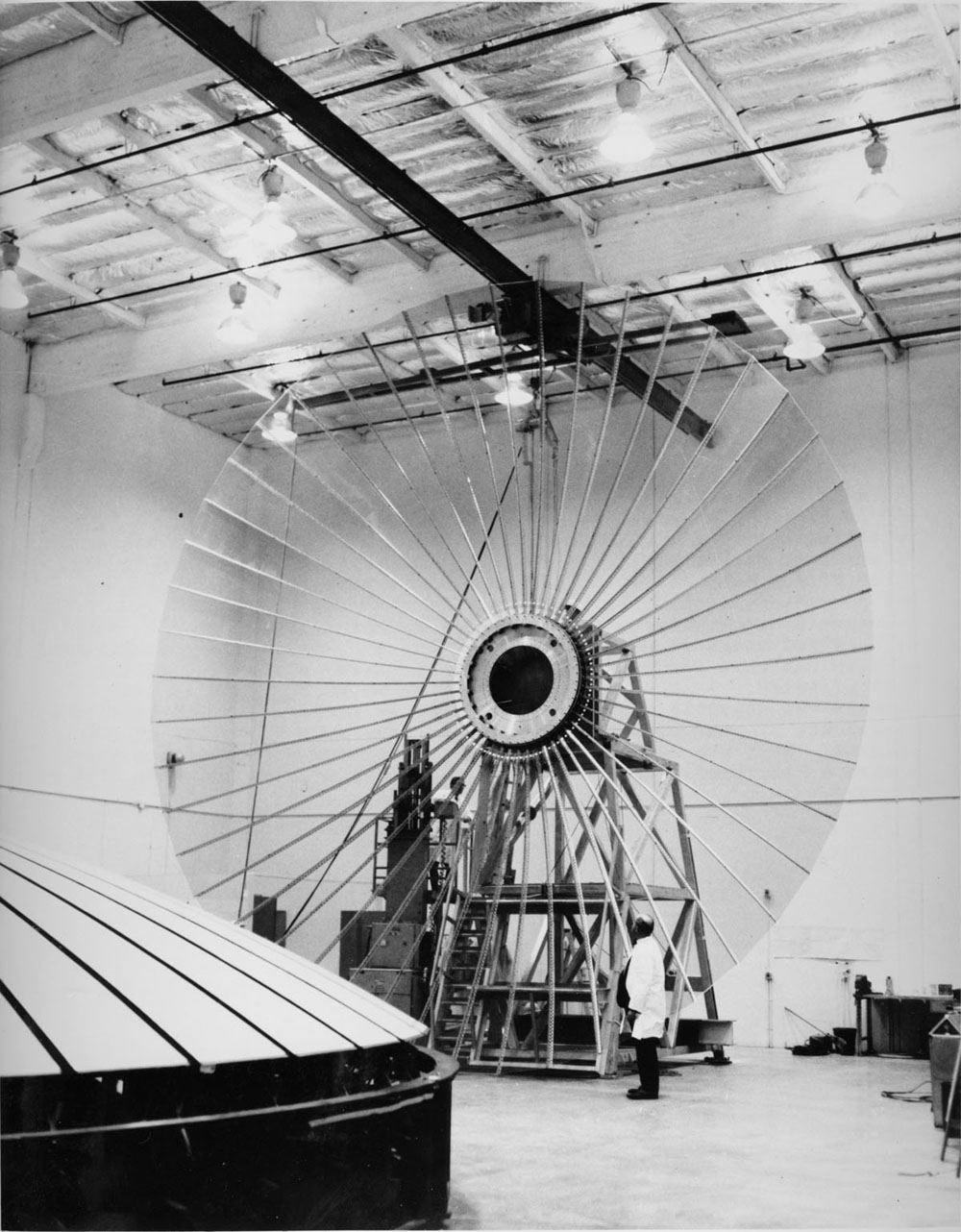Space History Photo: "Space Flower" Antenna Application Technology Satellite (ATS)

In this historical photo from the U.S. space agency, the "Space Flower" was the first of the 9-meter (30-foot) diameter antennas for the Application Technology Satellites (ATS) in October 1972. The ATS program was initiated in 1966 to demonstrate the feasibility and capability of placing a satellite in geostationary (geosynchronous) orbit over a fixed location on the Earth's surface.
The saucer-shaped antenna, built at Lockheed Missiles and Space Co., Sunnyvale, California, are constructed of aluminum ribs and Dacron mesh that are copper plated and coated with silicone. Also shown is the mold on which the mesh is sewn to the flexible ribs and later sewn in place. For the ride into space, the antenna ribs and mesh are wrapped around the hub of the antenna. When the antenna and spacecraft arrived in the proper orbit, a signal caused a restraining cable to be cut, and the antenna blossomed like an opening flower.
Each weekday, SPACE.com looks back at the history of spaceflight through photos (archive).
Get the Space.com Newsletter
Breaking space news, the latest updates on rocket launches, skywatching events and more!
Join our Space Forums to keep talking space on the latest missions, night sky and more! And if you have a news tip, correction or comment, let us know at: community@space.com.

The National Aeronautics and Space Administration (NASA) is the U.S. government agency in charge of the civilian space program as well as aeronautics and aerospace research. Founded in 1958, NASA is a civilian space agency aimed at exploring the universe with space telescopes, satellites, robotic spacecraft, astronauts and more. The space agency has 10 major centers based across the U.S. and launches robotic and crewed missions from the Kennedy Space Center in Cape Canaveral Florida. It's astronaut corps is based at the Johnson Space Center in Houston. To follow NASA's latest mission, follow the space agency on Twitter or any other social channel, of visit: nasa.gov.









